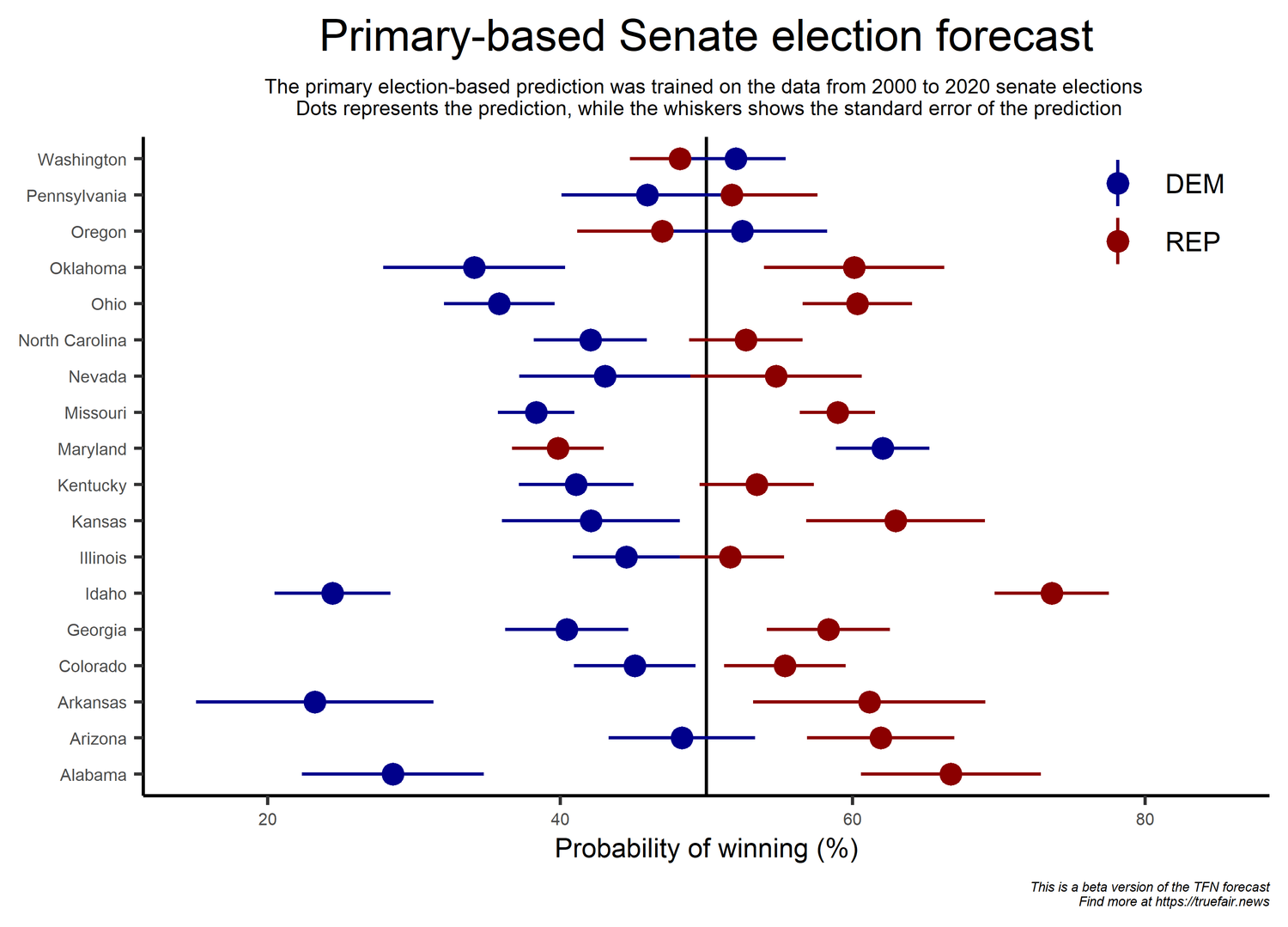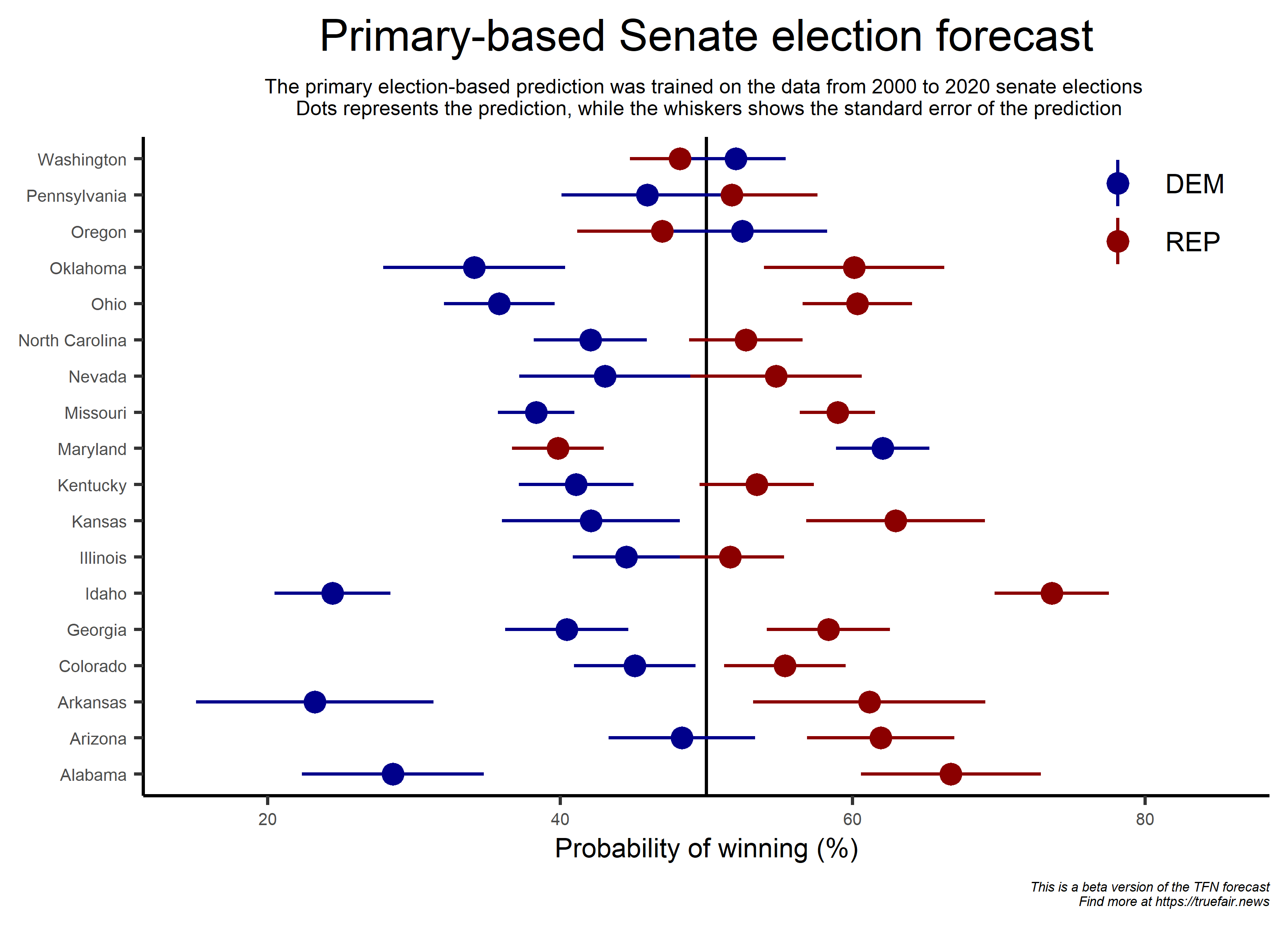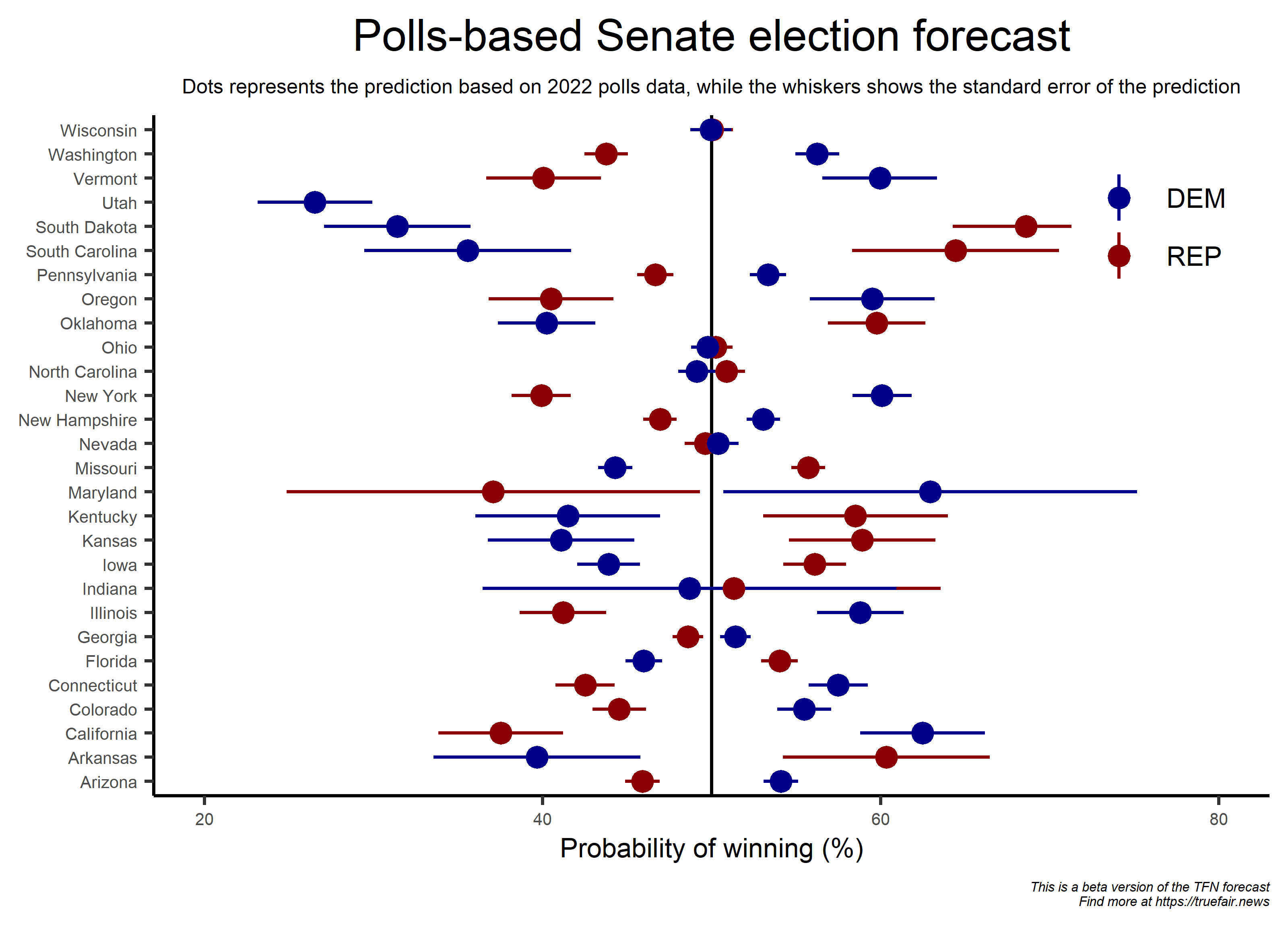
TrueFairNews puts its first Beta version of the Senate Election Model based on past election results. TFN's 2 model takes into account the Primary election data and the 2nd one takes into account popular polls which are available for multiple states. The quality of the polls were not taken into consideration for this model.
This analysis is free from the influence of a single or favorite election poll and is not sponsored by any party or non-governmental organization.
Primary election-based senate Prediction (Forecast) Model:
TFN Beta (first, with limitations and less than cleaned up data) version of the Model predicts, in the 18 states that we ran the model on, the Republicans will win 15 and the Democrats will win 3. There are 10 states that are included in this model as compared to the poll model.
Based on the Model
Republican win Pennsylvania, Oklahoma, Ohio, North Carolina, Nevada, Missouri, Kentucky, Kansas, Illinois, Idaho, Georgia, Colorado, Arkansas, Arizona, Alabama.
Democrats win Washington, Oregon, Maryland
Republican Blowout States: Oklahoma, Kansas, Idaho, Georgia, Alabama
Democrat Blowout States : Maryland
However, if you see, where the variance line, the line that crosses over the 50% mark, like in the states of Washington, Pennsylvania, Nevada, Illinois the confidence of the model on its prediction is relatively low. Another way to see this is that the, our models the party with greater than 50% is "PROBABLY going to win."

Right up about the above Primary model
The prediction is based on Generalized Linear Model. General election results are explained by the variation in the primary election in a given year taking into account the interaction of primary elections to party and state. The best model was chosen based on Akaike Information Criterion. Missing states are due to the lack of enough data to represent the variation. We tested the chosen model against the null model to see whether the fitted scenario was better than the null. We couldn't perform a proper enough cross-validation due to the low representation of some states in the data set. States in which the error bars (standard error of estimated value) overlap represent the situation where the confidence of prediction is too low to distinguish the winner. We reserve that this is a test model that will be developed in the future with the inflow of new data. This prediction should not be considered the only election result. This analysis is free from the influence of election polls and is not sponsored by any party or non-governmental organization.
Polls-based senate Predition (Forecast) Model:
In the poll based model, the model takes into account ONLY polling data to make predictions. There are more elections that are quite closer than the primary model like Wisconsin, Ohio, Nevada. In the Primary mode, Ohio is a blow out for the Republicans.
Republican win Utah, South Dakota, South Carolina, Oklahoma, Missouri, Kentucky, Kansas, Iowa, Indiana, Florida, Arkansas
Democrats win Washington, Vermont, Pennsylvania, Oregon, New York, New Hampshire, Maryland, Illinois, Georgia, Connecticut, Colorado, California, Arizona
Too Close to Call: Wisconsin, Ohio, Nevada,
Republican Blowout States: Utah, South Dakota, South Carolina, Idaho, Georgia, Alabama, Missouri, Kentucky, Kansas
Democrat Blowout States : Washington, Vermont, Pennsylvania, Oregon, New York, New Hamphsire, Maryland, Illinois, Georgia, Connecticut, Colorado, California, Arizona

The prediction is based on Generalized Linear Model. General election results are explained by the variation in polls for 2022. The best model was chosen based on Akaike Information Criterion. Missing states are due to the lack of enough data to represent the variation. States in which the error bars (standard error of estimated value) overlap represent the situation where the confidence of prediction is too low to distinguish the winner. This prediction should not be considered the only election result. This analysis is free from the influence of election polls and is not sponsored by any party or non-governmental organization.
In conclusion, looking at the Primary results model to the Polls results model, it is clearly evident that the polls donot track or take into account the Primary results that happened a few months ago with 100's of thousands of people participate. Only the final result post election data would guage the performance of not only of the model and its improvements but also which set of data was more precise and better reliable.

